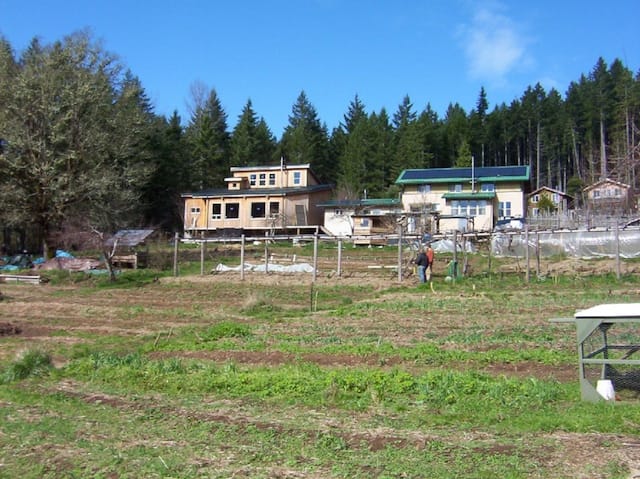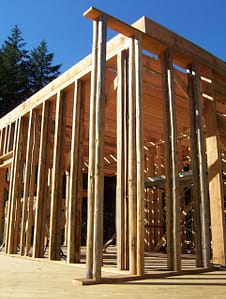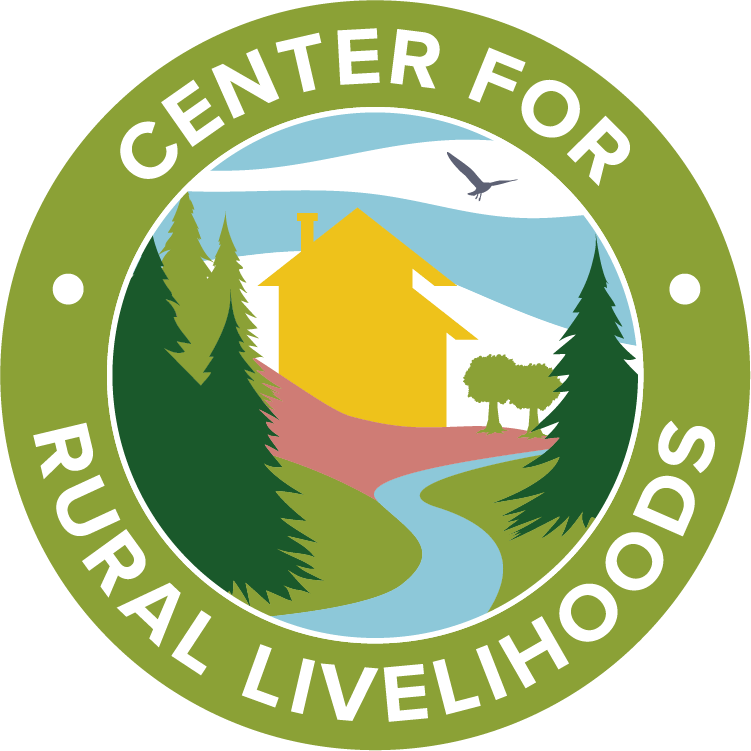About Us

Our Mission:
Create and strengthen pathways to rural livelihoods that harmoniously advance social, economic and ecological resilience.
Our Social Vision:
A vibrant, interdependent local economy that provides meaningful and remunerative livelihoods, encourages the recognition of our common humanity, and regenerates our ecological and social commons.
Our Values
Resilience
We build social and economic resilience for the local community and for the land on which the community resides.
Alliance Building
We understand and help build up the complex, vital links between communities, local ecology, and the economy.
Inclusion and Equity
We proactively work against settler colonialism, systemic racism, heteronormative patriarchy, and structural poverty to increase wealth-building opportunities for marginalized, objectified, and alienated communities.
Listening to the Land
We believe that the land interweaves time and space, being and non-being, rhythm and melody. We are committed to deeply listening to the embodied marks of the past in the layers of soil and rock below our feet; to the windy breath of the present moment; and to the future alive in the distant horizon where sky and earth meet.
Social Ecology
We transcend the seemingly fixed conceptions of human and non-human nature to approach a creative synthesis that embeds economics within ecology, agriculture within culture, and ecosystems within social relations.
Open-Heartedness
We are committed to keeping open hearts regardless of physiological, social, and political impulses to do otherwise. We recognize this work can be emotional, complex and carry historic and cultural implications.
Our History
The Center for Rural Livelihoods (originally named Aprovecho) was founded in the late 1970s by former Peace Corps members who helped in rebuilding efforts in Central America after a hurricane. They returned to Oregon hoping to develop technologies and social structures that could be resilient in the face of natural and social disasters. They saw themselves as part of the back-to-the-land movement, which included over ten thousand communes in the United States in the 1970s. That movement was a fruit of the 1960s counterculture and the freedom movements of the period, all of which had seeds in the Black freedom movement’s dramatic expansion after Montgomery Bus Boycott in December 1955 and especially after the February 1960 sit-in movement. Beyond disaster relief, our organizations’ founders were devoted to social and technological reconstruction that could maximize human freedom and minimize domination.
Over the decades, much has fruited from this initial impulse in unexpected ways. In 1981, they purchased forty acres campus of forestland and placed it into trust. The rural center would become home to numerous projects well ahead of its time. The forest is home to one of the longest-running ecological forest stewardship experiments in the Pacific Northwest—having produced thousands of board feet of lumber used in the construction of the campus while increasing species diversity, sustaining a continuous canopy, and managing towards the climax successional stage of old-growth.
 Innovative construction techniques happened each decade with the first earthen “cob” building structure in Oregon in the 1980s; the first strawbale-insulated building in Oregon in collaboration with the University of Oregon in the 1990s; the creative use of double-sided small-diameter flat poles as studs in the timber frame of the Community Meeting Hall in the 2000s designed in a way that added this approach to the Lane County Building Code, and with an integrated approach to vernacular construction of tiny homes in the Sustainable Shelter Series of the 2010s.
Innovative construction techniques happened each decade with the first earthen “cob” building structure in Oregon in the 1980s; the first strawbale-insulated building in Oregon in collaboration with the University of Oregon in the 1990s; the creative use of double-sided small-diameter flat poles as studs in the timber frame of the Community Meeting Hall in the 2000s designed in a way that added this approach to the Lane County Building Code, and with an integrated approach to vernacular construction of tiny homes in the Sustainable Shelter Series of the 2010s.
It is our mission to create and strengthen pathways to rural livelihoods that harmoniously advance social, economic, and ecological resilience.
Innumerable projects have incubated within this nonprofit and taken root: the “Apro Fava” seed can be purchased now from seed catalogues, KSOW 106.7 FM—birthed within Aprovecho—is now an independent radio station, and CRL has also incubated local nurseries, construction companies, forestry businesses, furniture makers, and Permaculture consulting businesses in southern Lane County. From our rural center, the “hippy scientists” of wood burning have engineered stove designs that are now being used by tens of millions of people across the world. At its root, each of these projects – and many more – sought to build community, to harmoniously embed social life within the natural world, and to nourish a continuous spirit of experimentation in living.
Today, the Center for Rural Livelihoods finds itself in a very different context than its founding. There have been seven economic recessions since the organization’s founding (1980, 1981-2, 1990-1, 2001, 2007-9, 2020, 2022). Since 2017, the Bulletin of Atomic Scientists has set the Doomsday clock at its nearest time to midnight since the clock’s creation seventy-five years ago. The Union of Concerned Scientists argues that our current trajectory (accounting for politically possible reforms) is leading toward catastrophic climate collapse and the threat to all organized human life on the planet in the foreseeable future. The United Nations High Commission on Human Rights notes that more people are living as refugees today than at any time since WWII. It is commonplace to talk now of the necessities of life: housing, food, and energy – as well as education, health care, and mental health – as being in “crisis.”
At the Center for Rural Livelihoods, we have no panacea, but we do offer a straightforward vision of rural development whose simplicity conceals its profound power to rehabilitate our social relationships and our economic relationship to nature. Our forests can be a source of foods (fruit, nuts, and animal husbandry), while also serving as a source of lumber for affordable housing, as energy for heating, as a natural system for water filtration, and as reservoirs of biodiversity, as carbon sinks, and as home to festivals (such as Oregon Country Fair). It is ultimately our hope that our forests and meadows and our ponds and prairies can be working landscapes of food, fuel, fiber, and festivals in which to build thriving and resilient communities.
Since such a holistic, community-oriented, respectful approach to non-human nature is not incentivized by our political and economic system, it is our work as a nonprofit organization to find ways to make this vision viable. In recent years, we have shifted our focus to economic livelihoods to make win-win scenarios for ecologies and economies more accessible to people who share our vision. It has become urgently apparent to us that community coalitions are essential to developing such alternate pathways.
Our vision is big but our theory of change is by necessity humble. We are committed to moving forward with this work on our land and we are always open to partners to create co-motion together. It is our intention to work with grassroots communities and institutions with a positive vision of rural development that could, if networked broadly enough, constitute a moral authority and a bottom-up base of power for broader social change.
Our work now includes collaboration with local Indigenous leadership in ways that inform and lead the direction of this sector of land management. Supported by Business Oregon, Oregon Community Foundation, Roundhouse Foundation, and Lane County we are working with diverse groups ƒrom high schools, Indigenous leadership of Siletz, Coos, Kalapuya heritage, with Live Oak Consulting, SquareOne Villages, Queers in the Woods, Cerro Gordo Land Conservancy, Resilience Permaculture, Big Leaf Construction, Whitesnake Arts, Cascadia Vernacular, Branch Road Farm School, and myriad land stewards and advocates in the region. This reparative and reconstructive work is unimaginable without steady engagement with those communities that have been and continue to be most attacked by systems of domination and it is our commitment to do so.
